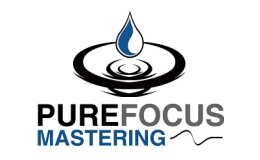
Mastering Services
Worldwide
Online
Contact us
today
to get your project
started!

Mastering Services
Worldwide
Online
Contact us
today
to get your project
started!
Well, there is no rule saying you can’t, but here are some good reasons why you shouldn’t. Part of the mastering engineer’s job is to make sure each song is tonally balanced, so that no parts of the frequency spectrum are considerably louder than others. Chances are your listening room has resonances and nodes which effectively make the sound you hear EQed a certain way, particuarly in the bass region. As a result, you will make necessary corrections in the mixdown to compensate. When played on a different speaker system in a different room, the mix will likely sound as though it has an EQ applied to it which is the mirror image of your room’s natural EQ (as you were compensating for it). Similarly, most speakers used for mixing will not be as accurate or tonally flat as those used in a mastering studio. The same principle will apply as you correct for the speakers’ natural frequency peaks and dips. When you master your own work, these tonal flaws can be magnified even further as you continue to work in the same sonically-coloured room. Good mastering studios have expensive, highly precise speaker systems which are strategically placed in rooms designed for acoustic accuracy. This enables them to hear a very true and accurate representation of your music, and as such they can make effective EQ corrections.
Additionally, a mastering engineer’s skills are very specialised and have been honed thanks to many years of experience. They tend to have specialised tools and know exactly how best to use them. Creatively, it is also beneficial to have someone other than yourself, who has no personal attachment to your music, listen to it with fresh ears and analyse it from a different perspective.
No. This is every mastering engineer’s nightmare. Limiting is usually second-to-last in the signal chain before dither, and robs a mixdown of much of its dynamics, particularly when used in excess. Try to plan your mixdown so that the highest signal peaks stay below 0.0 dBFS. As a last resort, lower the fader on the master channel until your highest signal peak remains below 0 dB.
Yes, but be cautious, and in general don’t compress too excessively. Bus compressors, such as the legendary SSL Stereo Bus Compressor, can contribute a lot to the ‘sound’ of a mixdown, and can be a useful creative tool. If you are using one, it’s a good idea to have it inserted in the signal chain when you start the mixdown, rather than inserting it at the end. It is also a very good idea to make a backup copy of your mixdown with no bus
compressor, just in case you change your mind down the road.
No. Normalising, or any change to the gain of audio file will result in requantisation, which introduces small amounts of nasty distortion to the audio signal. In a 24-bit file this is a very small amount, but normalising is still an unnecessary procedure. The overall loudness of the track will be brought up as part of the mastering process, so if your raw mixdown seems very quiet there is no need to worry.
No. Bit depth, along with sample rate, are the two parameters used to digitally describe an analogue waveform. The higher the bit depth (ie 24-bit vs 16-bit), the more accurate the digital representation will be. Starting with a 16-bit recording and processing it repeatedly at 16-bit, as is often the case during the creation phase of a song, will introduce a considerable amount of quantisation distortion – which translates to a high-end glare in the treble region which can be unpleasant and cause ear fatigue. Always work at 24-bit or higher when possible to keep your recordings sounding their best!
Audio CD-Rs are very error-prone by nature (there is no intrinsic error-correction system), and very dependent on the type of media used and the quality of the CD-R drive being used. Any respectable CD manufacturing facility will have a strict policy relating to the error rate on a client CD-R to be made into a glass master for pressing. PureFocus uses HHB’s high quality recordable CDs, designed specially for professional audio use, and a Plextor CD-R drive with PlexTools software for ensuring ultra-low error rates – well below the minimum standards required by pressing plants.
To send your file(s) to PureFocus — you have two methods to choose from:
**Please remember to include your own email address so we can contact you about your project!
PureFocus strongly recommends sending your audio files as WAV or AIFF format at at least 24-bit resolution, at the sample rate at which your project was originally recorded/produced. It is also recommended to archive your file(s) to a format such as ZIP or RAR, as this will both reduce the file size and also ensure that no data is lost or damaged during transfer.
Currently PureFocus can accept payment via PayPal, Money/Postal Order, or cash (at your own risk).
Mastering rates at PureFocus start at $65 per track for online delivery. Once you email with details about your project you will be presented with a quote and can get started.
Please inquire about discounts for large quantities.
This can vary depending on the current workload, but often for single songs or small quantities turnaround is next-day. Very seldom will it be more than 2-3 business days days (M-F).
[This FAQ will be expanded as time goes on]